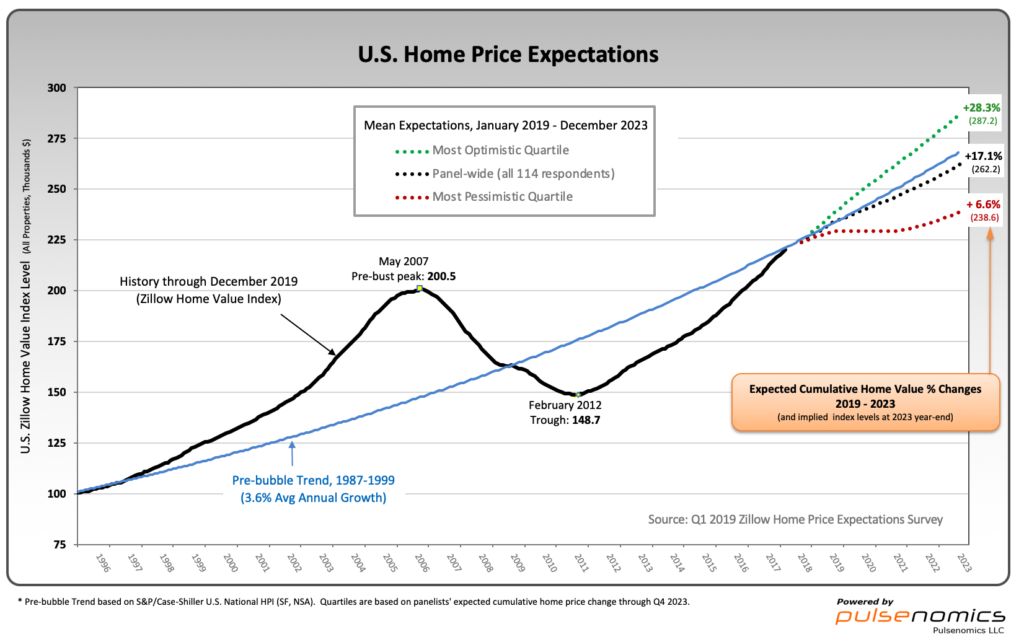On March 12, 2019, the Zillow Q1 2019 Home Price Expectations Survey results were released. This survey is done on a quarterly basis.
An excerpt from the press release:
Panelists are also asked each quarter to forecast the performance of U.S. home values. In Q1 2019, they on average predicted a 4.3 percent increase in U.S. home values this year, up from the 3.8 percent rate projected for 2019 just three months ago.“The downturn in mortgage rates since our previous survey appears to have elevated price expectations for 2019,” said Pulsenomics® Founder Terry Loebs. “The longer-term outlook continues to be mixed and reflect uncertainties about housing supply, first-time homebuyer capacity, and other lingering market risks. For example, the most optimistic group of experts expects 28.3 percent cumulative home value appreciation through 2023, while our least optimistic group expects a cumulative gain of just 6.6 percent over the same period. In dollar terms, the difference between these scenarios is $6.3 trillion in national home equity value.”
–
Various Q1 2019 Zillow Home Price Expectations Survey charts are available, including that seen below:

As one can see from the above chart, the average expectation is that the residential real estate market, as depicted by the U.S. Zillow Home Value Index, will continually climb.
The detail of the Q1 2019 Home Price Expectations Survey is interesting. Of the 100+ survey respondents, only three (of the displayed responses) forecasts a cumulative price decrease through 2023, and none of those forecasts is for a double-digit percentage decline. The largest decline is seen as a 7.08% cumulative price decrease through 2023.
The Median Cumulative Home Price Appreciation for years 2019-2023 is seen as 4.30%, 7.63%, 10.66%, 14.08%, and 17.62%, respectively.
For a variety of reasons, I continue to believe that even the most “bearish” of these forecasts (as seen in the above-referenced forecast) will prove far too optimistic in hindsight. From a longer-term historical perspective, such a decline is very mild in light of the wild excesses that occurred over the “bubble” years.
I have written extensively about the residential real estate situation. For a variety of reasons, it is exceedingly complex. While many people continue to have an optimistic view regarding future residential real estate prices, in my opinion such a view is unsupported on an “all things considered” basis. Furthermore, from these price levels there exists outsized potential for a price decline of severe magnitude, unfortunately. I discussed this downside, based upon historical price activity, in the October 24, 2010 post titled “What’s Ahead For The Housing Market – A Look At The Charts.”
_____
The Special Note summarizes my overall thoughts about our economic situation
SPX at 2790.35 as this post is written
No comments:
Post a Comment